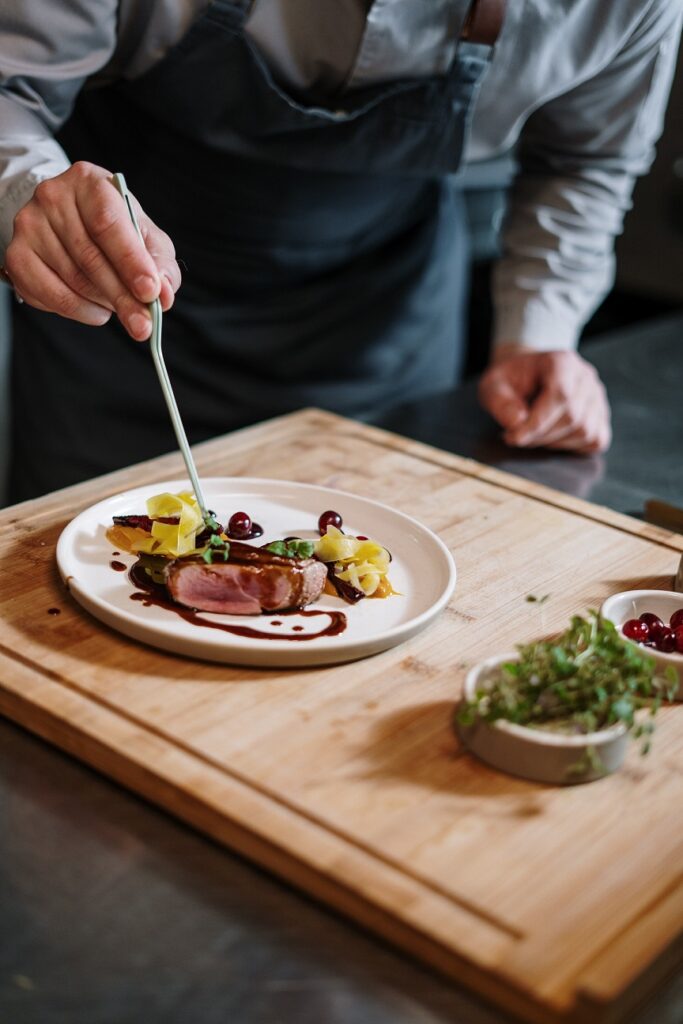Unleashing Your Culinary Imagination
Cooking is not only about following recipes—it’s also an opportunity for culinary exploration and creativity. Recipe adaptation allows you to put your personal touch on dishes, creating unique flavor combinations and experimenting with ingredients. By embracing creativity in the kitchen, you can transform ordinary recipes into extraordinary culinary masterpieces.
Understanding Recipe Adaptation:
Recipe adaptation involves modifying existing recipes to suit your preferences or accommodate ingredient substitutions. It empowers you to tailor recipes to your taste, dietary restrictions, or ingredient availability. Whether you’re adjusting measurements, replacing ingredients, or adding your own twist, recipe adaptation allows you to make a dish truly your own. It opens the door to endless culinary possibilities and encourages you to think outside the box.
Embracing Culinary Creativity:
Creativity is a powerful tool in the kitchen. It enables you to think beyond the confines of a recipe and explore new flavors, textures, and techniques. By embracing culinary creativity, you can elevate your cooking to a whole new level. Whether it’s combining unexpected ingredients, experimenting with different cooking methods, or presenting dishes in unique ways, creativity allows you to express your individuality and create culinary experiences that are truly memorable.
Flavor Pairings and Combinations:
One of the exciting aspects of recipe adaptation is discovering new flavor pairings and combinations. Experimenting with different herbs, spices, sauces, and condiments can transform a dish into a culinary delight. Understanding the basic principles of flavor profiles—sweet, salty, sour, bitter, and umami—can guide you in creating harmonious and well-balanced flavor combinations. Don’t be afraid to mix and match ingredients to create unexpected and delicious flavor profiles.
Ingredient Substitutions:
Adapting recipes often involves ingredient substitutions, especially when certain ingredients are not available or need to be replaced due to dietary restrictions or preferences. Understanding the flavor, texture, and cooking properties of ingredients allows you to make informed substitutions. For example, you can replace dairy milk with plant-based alternatives, swap all-purpose flour for gluten-free alternatives, or substitute one type of protein for another. Experimenting with ingredient substitutions can lead to exciting discoveries and broaden your culinary repertoire.
Building on Tradition:
Recipe adaptation doesn’t mean completely reinventing the wheel. It can also involve building on traditional recipes by adding your own creative twists. By understanding the foundations of classic dishes, you can introduce subtle modifications or enhancements to make them your own. For example, you can incorporate different spices, herbs, or aromatics to add depth and complexity to a traditional sauce or stew. Balancing innovation with respect for culinary traditions can result in beautifully balanced and unique dishes.
Improvisation and Flexibility:
Creativity in the kitchen often requires improvisation and flexibility. Embrace the freedom to deviate from a recipe and follow your instincts. Taste as you go, adjust seasonings, and don’t be afraid to make changes on the fly. Improvisation allows you to adapt to ingredient variations, experiment with new techniques, and create dishes that suit your personal preferences. Remember, some of the greatest culinary discoveries have come from moments of spontaneous creativity.
Presentation and Plating:
Creativity extends beyond the flavors and ingredients—it also encompasses presentation and plating. The way a dish is presented can elevate the overall dining experience. Play with different plating techniques, use garnishes to add visual appeal, and consider the overall aesthetics of the plate. Thoughtful and creative plating can transform a simple dish into a visually stunning masterpiece, leaving a lasting impression on your guests.
Embracing Mistakes and Learning Opportunities:
In the journey of recipe adaptation and culinary creativity, mistakes are bound to happen. Embrace them as learning opportunities and chances to grow as a cook. Not every experiment will be a resounding success, but through trial and error, you will develop a deeper understanding of flavors, techniques, and the art of adaptation. Analyze what went wrong, adjust accordingly, and don’t be deterred from continuing to explore and innovate in the kitchen.
Sharing and Collaborating:
Creativity thrives in a community. Share your culinary creations, recipes, and adaptations with others. Engage in culinary discussions, exchange ideas, and seek inspiration from fellow cooks and food enthusiasts. Collaborating with others can spark new ideas, encourage experimentation, and foster a sense of camaraderie in the culinary world. Remember, the joy of cooking is often amplified when shared with others.
Embrace the Journey:
Recipe adaptation and culinary creativity are ongoing journeys. Embrace the process of discovery, exploration, and growth. Allow yourself to be inspired by different cuisines, ingredients, and techniques. Keep a journal of your experiments, successes, and lessons learned. Cultivate a mindset of curiosity and openness, and let your culinary imagination run wild.
Recipe adaptation and culinary creativity are the keys to unlocking your full potential in the kitchen. By embracing creativity, exploring new flavors, and adapting recipes to suit your taste and preferences, you can elevate your cooking to new heights. Embrace the joy of experimentation, learn from your mistakes, and share your culinary creations with others. Remember, the only limit to your culinary imagination is your willingness to explore and innovate. So, step into the kitchen, unleash your creativity, and embark on a flavorful and exciting culinary journey.
